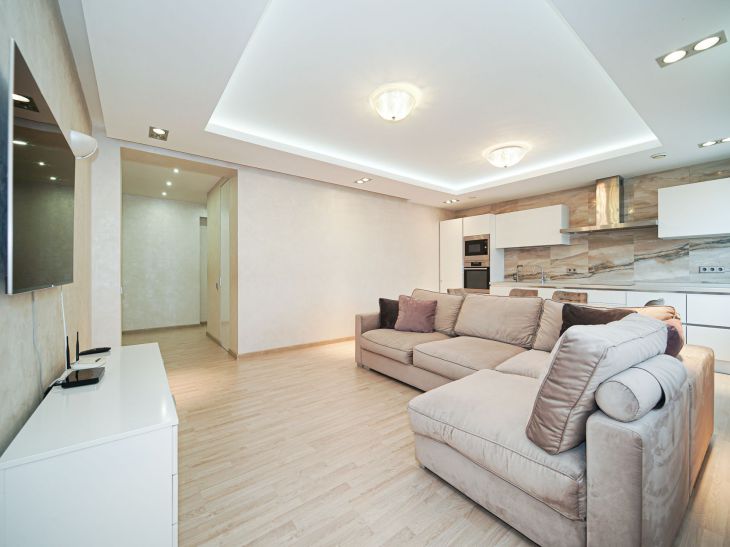The importance of choosing finishing material for the kitchen ceiling is difficult to overstate.
After all, we regularly, several times a day, expose the ceiling covering to high temperatures; if the exhaust hood is faulty, tiny particles of grease and dust can settle on it, and don’t forget about the high level of humidity.
All these negative factors force us to periodically (usually once every 2-3 years) make repairs, says Yulia Tychino .
How to choose a ceiling covering for such an important area with the best price-quality ratio? Let's try to consider several options that will help us create beautiful shelves in the kitchen.
Now we will not talk about old methods of pasting ceilings with washable wallpaper or about ordinary whitewashing. We will talk about such fairly modern finishing materials as

- polystyrene foam panels
- plasterboard
- stretch ceilings
- and rack structures.
Polystyrene foam panels are one of the cheapest and easiest to install materials. Finishing the ceiling in this way will not cause any trouble even for an unprepared and inexperienced person.
All you need is glue, a stationery knife and a ruler. However, low fire safety ratings are often noted among the disadvantages of this coating.
Slatted ceiling finishing in the kitchen is not typical for Russia, we are not very familiar with this type of material. But in the end, we get a very strong and reliable structure, with the possibility of internal wiring.
Drywall, which is so popular these days, is not far behind polystyrene foam panels in terms of technical characteristics, but it requires serious preparation before installation, the presence of an experienced craftsman, and finishing (for example, painting).
In a word, this is a rather labor-intensive and troublesome business, which in most cases does not pay off its costs.
And finally, suspended (as well as stretch) ceilings. Despite the high cost of both material and work, this method of decorating the ceiling in the kitchen can confidently be called the most practical: the plastic used for their manufacture practically does not absorb moisture, has good fire safety indicators, does not require final painting and is easy to clean.
To sum up the above, it is easy to draw the following conclusion: if you have the available funds, give preference to a slatted or suspended ceiling.
Previously it was reported how to properly decorate a room with a low ceiling.









